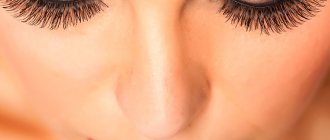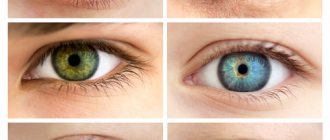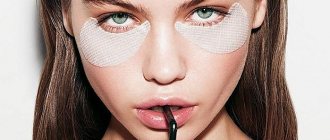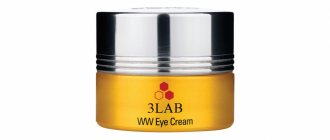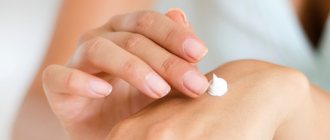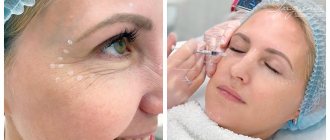Eyes are constantly exposed to stress, which provoke visual fatigue, and one of the symptoms of this condition is redness of the conjunctival membrane. Such violations mainly appear during prolonged work at the computer or as a result long wearing contact lenses (especially for people with sensitive eyes).
get rid of such symptoms using special ophthalmic drops , which, depending on the composition, can eliminate signs of fatigue and redness or have a complex effect, additionally moisturizing and protecting the eyes from external influences.
Causes of red eyes
- Allergic reaction;
- Long-term work at the computer without breaks;
- Improper care of contact lenses or violation of wearing regime;
- Chronic lack of sleep;
- Damage to the eyelids or eyeball;
- Eye reaction to tobacco smoke, dust or wind;
- Foreign body in the eye;
- Use of low-quality cosmetics;
- Reaction to cosmetic procedures, such as eyelash extensions;
- Visiting a bathhouse, sauna and other places with a sharp temperature change;
- Lack of vision correction or incorrect correction.
Redness of the eyes due to illness
Enlarged blood vessels in the eyes can indicate a number of ophthalmic diseases, including conjunctivitis and blepharitis. In this case, accompanying symptoms may appear, for example, purulent discharge, loss of eyelashes, swelling.
Dry eye syndrome is also often accompanied by redness. In addition, the patient experiences noticeable discomfort - the eyes dry out, hurt, a burning sensation and a feeling of sand appear. Dry eye syndrome usually affects office workers, schoolchildren and people whose work requires high concentration. Prolonged work at the computer and long stays in air-conditioned rooms increase the risk of developing the disorder.
Redness of the eyes may indicate the presence of diseases
Another serious cause of redness is corneal hypoxia. Chronic lack of oxygen leads to the proliferation of small blood vessels. This violation requires monitoring by an ophthalmologist! Most often, corneal hypoxia occurs due to constant wear of contact lenses.
Find your nearest optical store
By redness of the eyes, the body can react to infectious and viral diseases of a non-ophthalmological nature.
Types of skin diseases around the eyes and eyelids
Among the huge number of diseases caused by inflammation of the eyelids, several of the most common groups can be distinguished:
- bacterial lesions of the skin of the eyelids (abscess of the eyelid, phlegmon);
- inflammatory diseases of the glands and edges of the eyelids (blepharitis, barley, chalazion, meibomitis, demodicosis);
- violations of the shape and position of the eyelids (entropion, eversion, ptosis, lagophthalmos);
- allergic diseases (eczema, dermatitis, angioedema);
- developmental abnormalities of the eyelids and tumors (coloboma, papilloma, lipoma, nevus).
Bacterial lesions of the skin of the eyelids
Abscess of the century
An abscess is inflammation and redness of the eyelid with the formation of a cavity filled with pus. Often an abscess appears after an infected eyelid wound.
Causes of eyelid abscess:
- ulcerative blepharitis;
- boils;
- barley;
- purulent processes in the paranasal sinuses and orbit of the eye.
Sometimes the abscess opens on its own, and the inflammation subsides. But in most cases, a non-healing fistula appears at the site of inflammation.
Treatment of an abscess is sanitation of the eyelids and opening of a purulent formation on the eyelids with the mandatory use of antibiotics and sulfonamides.
Phlegmon
Cellulitis is an extensive inflammation of the tissues of the eyelid that occurs against the background of untreated stye. It is characterized by fever, headache, severe swelling of the eyelid and redness of the skin.
Treated with antibacterial agents, antihistamines.
Inflammatory diseases of the glands and edges of the eyelids
Blepharitis
Blepharitis is an inflammation of the eyelids, which causes redness, burning, itching and pain on the skin.
The following types of blepharitis are distinguished: allergic, meibomian, demodectic, infectious, scaly. Read more about blepharitis here.
Barley
Barley is an acute, infectious inflammation of the eyelids, resulting from pathogens entering the eyelash hair follicle or the sebaceous gland of the eyelid. Visually, stye looks like a small nodule on the eyelid.
You can read about how to properly treat stye on this page.
Meibomyitis and chalazion
Meibomyitis and chalazion are diseases associated with the appearance of a pathological process in the meibomian glands.
Meibomia appears when the duct of the sebaceous gland of the eyelid is clogged. Characterized by an acute course of the disease.
Chalazion is a chronic form of meibomitis. If a chalazion is left untreated for a long time, it turns into an eyelid cyst. Sometimes, for diagnostic purposes, it is necessary to puncture the eyelid cyst to identify the nature of the neoplasm.
Treatment and removal of a cyst on the eyelid occurs using classical techniques or laser treatment.
For more information about the symptoms and treatment of this pathology, see here.
Demodicosis
A disease of the eyelids caused by the Demodex mite. It is characterized by the appearance of yellow mucus in the eyes, gluing and breaking of eyelashes, itching and burning of the eyes.
To cleanse the eye from foci of infection, cleaning (sanitation) and rinsing of the lacrimal ducts are used. Read about the treatment of demodicosis on this page.
1 Diseases of the skin around the eyes and eyelids. Diagnosis and treatment
2 Diseases of the skin around the eyes and eyelids. Diagnosis and treatment
3 Diseases of the skin around the eyes and eyelids. Diagnosis and treatment
Violations of the shape and position of the eyelids
Turn of the century
When the eyelid is inverted, its main edge is turned onto the eyeball. Because of this, the eyelashes touch the surface of the cornea and conjunctiva, the eyes become red, irritated, and tears constantly flow from them.
Causes of pathology:
- convulsive or spastic contractions of some parts of the orbicularis oculi muscle;
- cicatricial contractions of the conjunctiva and cartilage of the eyelid that occur in certain chronic eye diseases (for example, trachoma).
The most effective method of treatment is surgery. Plastic surgery for entropion of the eyelid is also possible.
Eversion of the century
Ectropion is an inversion of the edge of the eyelid. With this inflammation of the eyelid, the conjunctiva turns out in a certain area or throughout the entire eyelid, which leads to its drying out.
The fact that the eye is constantly open, even at night, contributes to clouding of the cornea, the appearance of keratitis and other diseases.
Causes of eversion of the eyelid:
- age-related changes in the eye with sagging of the lower eyelid;
- paralysis of the orbicularis oculi muscle;
- tightening of the skin of the eyelids due to injuries, burns (cicatricial eversion), systemic diseases of the body.
First, it is necessary to eliminate the main causes that caused this disease. Surgical procedures can then be used.
Ptosis
Ptosis is an abnormally low position of the upper eyelids in relation to the eyeballs. This leads to vision defects and rapid eye fatigue. Ptosis can be congenital or acquired.
Causes of ptosis:
- damage to the oculomotor nerve;
- damage to the muscle that elevates the upper eyelid;
- strokes, encephalitis and other neurological diseases.
Treatment of the disease is mainly surgical.
Lagophthalmos
Lagophthalmos is incomplete closure of the palpebral fissure, which leads to damage and drying of the cornea and conjunctiva.
Causes of the disease:
- eyelid injuries,
- jades,
- short eyelids from birth.
In addition to treating the underlying disease, artificial tears and disinfectant drops are prescribed. In severe forms of the disease, surgical intervention with partial suturing of the palpebral fissure is used.
Allergic inflammation of the eyelids
Allergic diseases of the eyelids are accompanied by severe itching, swelling and inflammation of the eyelids.
In eczema , the skin of the eyelids is covered with papules, vesicles and pustules. Characteristic rashes appear not only on the skin of the eyelids, but also on the body. The pathology develops after suffering eyelid dermatitis or contact with allergens. At the end of the disease, crusts and serous exudate appear on the skin of the eyelids.
Characteristic signs of urticaria are swelling of the eyelids, itching and burning of the skin of the eyelids. Subsequently, blisters appear on it.
With contact dermatitis , 6 hours after contact with the allergen, swelling and inflammation of the eyelids develop with itchy papules and vesicles. Usually both eyes are affected at once.
Treatment of allergic inflammation of the eyelids is medicinal.
1 Diseases of the skin around the eyes and eyelids. Diagnosis and treatment
2 Diseases of the skin around the eyes and eyelids. Diagnosis and treatment
3 Diseases of the skin around the eyes and eyelids. Diagnosis and treatment
Anomalies of eyelid development and tumors
Coloboma
Coloboma of the eye is one of the most unpleasant diseases, which is expressed in the absence of some eye membranes. Coloboma of the eyelid is the most common. The pathology appears on the upper eyelids, but sometimes affects the lower eyelids too.
Coloboma is usually triangular in shape, where the base of the triangle is the ciliary edge of the eyelids. Since the defect affects all layers of the organ of vision, there are no eyelashes and glands in the area of coloboma.
In most cases, it is congenital, but can also occur as a result of injury and other illnesses. Another type of congenital coloboma, iris coloboma, is one of the main causes of vision loss in childhood.
Coloboma is a serious danger to the eye, as it leads to degeneration of the cornea, keratitis and other secondary diseases of the organs of vision, as well as blindness!
The most effective treatment for coloboma is surgery. Surgery for coloboma involves excision of damaged tissue and movement of a musculocutaneous flap to the site of the defect. With the help of plastic surgery, the correct edge of the eyelids is formed, which prevents the appearance of ptosis, entropion, and other complications.
Benign formations of the century
Papilloma of the eyelids
Papilloma appears on the lower eyelid usually in people over 60 years of age.
It grows slowly, looks like gray-yellow papillae, and has a spherical or cylindrical shape. In 1 case out of 100, papilloma can turn into cancer. Treatment of eyelid papilloma is surgical.
Senile wart
A senile wart is a flat and even formation of brown, yellow or gray color. It grows in older people along the lower ciliary edge of the eyelids. Treatment: cryodestruction or laser removal.
Cutaneous horn
The cutaneous horn is a dirty gray formation protruding above the eyelid. Electro- and laser excision are used for treatment.
Nevi
Nevus (or mole ) is a benign formation on the skin, from light brown to black. Nevi on the eyelid can be inherited, appear due to long exposure to the sun, disruptions in the hormonal system, or after taking certain medications. Hanging moles can appear in old age. If the formation does not bother you, there is no need to treat it.
If unpleasant symptoms appear: itching, pain, growth, blurred vision, you must consult an ophthalmologist to investigate the nature of the mole and receive the necessary treatment.
Atheroma
Eyelid atheroma ( epidermal cyst ) is a painless, dense formation that appears on the eyelid due to blockage of the sebaceous gland ducts.
Over time, the atheroma begins to increase in size and can impair vision. In this case, surgical procedures are performed. After removal of atheroma of the eyelid, there are usually no complications.
Do you need a doctor's help?
If redness of the eyes is not accompanied by accompanying symptoms, you can observe the dynamics of your condition without medical help. Perhaps this was a one-time reaction of the body to poor sleep, strong wind or an allergen. In this case, the redness will go away on its own in just a couple of days.
If you notice that the redness does not go away or intensifies, and even more so if it is accompanied by itching, swelling, discharge from the eyes, pain, burning, foreign body sensation or blurred vision, you must consult a doctor as soon as possible to rule out diseases and get adequate treatment!
Allergic reaction
Exposure to allergens on the mucous membrane can also cause the eyes to sting. Allergies often cause conjunctivitis. At the same time, it is quite easy to distinguish irritation from allergies. When an allergy occurs, the eyes will sting until the irritant is completely eliminated. Allergic conjunctivitis is usually accompanied by watery, swollen, and red eyes. To treat an allergic reaction, an integrated approach is used. The most effective are drops that relieve irritation of the mucous membrane, as well as antihistamines that suppress the allergic reaction. In addition, to eliminate the symptoms of irritation, it is necessary to pay attention to a properly balanced diet.
Summarize. There are three reasons why your eyes may sting and water profusely. This is an external irritant, the spread of infection and an allergic reaction. Temporary irritation is the mildest case. To get rid of irritation, just rinse your eyes with water. If the cause of irritation is an allergy, it is enough to eliminate the allergic component. If the discomfort is due to an eye infection and your eyes have been stinging for several days, you should definitely consult an ophthalmologist.
The Vision Restoration Center employs doctors with more than 10 years of experience. Our clinic has an excellent reputation - thousands of patients undergo treatment with us every year. The medical center is equipped with modern diagnostic equipment. Another advantage of contacting us is an individual approach to treatment. We conduct a thorough examination, establish an accurate diagnosis and prescribe individual therapy.
Are your eyes stinging? Tired of unpleasant sensations? Don’t delay solving this problem - make an appointment with an ophthalmologist right now!
How to remove red eyes at home
If you are sure that there is nothing serious behind the redness, you can try to do without the help of a doctor and remove the redness of the eyes at home. A quick effect is possible only if the redness has become the body’s reaction to an external irritant - keep this in mind.
Folk remedies
To begin with, you can try traditional methods. For example, a tea compress on the eyes effectively helps relieve redness caused by lack of sleep, tobacco smoke or wind.
Brew regular black tea, without additives or flavorings, cool, dip cotton pads into the brew, squeeze lightly (but so that the pad remains well moisturized) and place on closed eyelids. Leave the lotions on for 5-10 minutes. After a while, the procedure can be repeated, but when repeating, be sure to use new discs.
Another popular folk remedy that will help get rid of red eyes is fresh cucumber lotions. Rinse the cucumber thoroughly, grate it on a fine grater, wrap the resulting mass in clean gauze and apply to your eyes for a few minutes.
Medications
We have already done a detailed review
for drops that can be used to remove redness from the eyes, so we won’t go into details. It is advisable to consult a doctor before using drops, since many of them have contraindications.
- "Okumetil" and Innoxa - vasoconstrictor drops help to quickly return the white color to the sclera. In addition to redness, the drops effectively combat eye puffiness. Recommended for people whose problems are associated with increased visual load;
- "Systane Ultra", "Gilan" and "Artelak Splash" are suitable in cases where redness is caused by dry eyes. These moisturizing drops mimic natural tears, which is why they are often recommended for people who wear contact lenses. Drops are excellent for preventing dry eye syndrome.
Eye drops that help relieve redness
Eye drops are an indispensable aid for red eyes. There are several types of such drops:
- Vasoconstrictors. Relieves puffiness during visual stress. Allowed to use no more than 1-2 times a week. With frequent use, they can cause an increase in intraocular pressure and disruption of the structure of the eye.
- Antihistamine and anti-inflammatory. Used as prescribed by a doctor when redness of the eyes is the cause of an allergy. Reduce redness, itching and tearing.
- Antibacterial. They come to the rescue when the redness of the eyes is caused by an infection.
- Antiviral. Prescribed by a doctor for ARVI, influenza and herpes virus.
- Moisturizing. The most popular drops. They can be used not only for treatment, but also for the prevention of eye redness. The moisturizing solution can be used daily.
The moisturizing category includes drops from Alcon:
SYSTAN BALANCE
lipid-based moisturizing drops
SYSTANE ULTRA
moisturizing drops compatible with soft contact lenses
Tips for those who use contact lenses
If you wear contacts, give them up for a while in favor of glasses. During the forced break, the eyes will recover. Microdamages that could appear due to a violation of the integrity of the lens or incorrect fitting technique will heal.
Before the redness goes away, change your lenses to glasses
At the same time, the condition of the tear film will improve and the oxygen balance will be restored, but only if the condition of your eyes is not neglected. Otherwise, giving up contact lenses alone will not be enough.
If for some reason you cannot switch to glasses, even temporarily, give up long-term wear lenses in favor of daily wear products. Also, if possible, try to reduce your lens wear during the day, for example, if you wear lenses for 8 hours or more, try to switch to 6 hours of contact lenses.
Strengthening eye blood vessels
The choroid of the eye is located between the sclera and the retina. Capillaries form a dense vascular network, which becomes visible only in the presence of pathological changes in the vessels and inflammation of any part of the eye. Increased vascular permeability can be caused by infections, fungi, viruses and bacteria. Vessels also dilate due to the action of histamine (with allergies). The result of this effect is red blood vessels in the eyes.
Remember that ignoring disturbances in the blood supply system of the visual organs can lead to dysfunction of the eye structures, decreased visual acuity, especially if redness is accompanied by pain, inflammation, and decreased visibility. Red blood vessels in the eyes become visible due to changes in the strength and elasticity of the capillary walls.
How to strengthen the blood vessels of the eyes:
- taking vitamin complexes with zinc, lutein, copper, iron;
- proper, well-balanced nutrition (eating foods high in vitamins C, K, A, E);
- eye drops, the action of which is aimed at strengthening the walls of blood vessels, improving metabolic processes, stabilizing cell membranes, reducing intraocular pressure, increasing tissue resistance to oxygen deficiency, regulating the biosynthesis of proteins involved in blood clotting (Taurine, Oftagel, Vizin) , "Emoxipin", "Oftan Katahrom").
To strengthen the blood vessels of the eyes, ophthalmologists prescribe drugs with a complex effect, which not only improve blood flow to the organs of vision, but also have an angioprotective effect, strengthen the vascular wall, and eliminate intraocular hemorrhages. If you urgently need to remove redness from the eyes, you can use whitening drops “Okumetil”, “Betadrin”, etc., just use them with caution.
conclusions
Self-treatment of red eyes is only permissible if there are no associated symptoms. Redness may appear against the background of a sharp change in temperature (for example, when visiting a bathhouse), under the influence of tobacco smoke or wind, or when dust gets into the eyes. The eyes turn red due to increased body temperature and allergic reactions of the body, from lack of sleep.
In all these cases, no special treatment is required; you can try to remove the redness using the gentle folk methods listed above and special eye drops. However, it is important to monitor the dynamics of redness and consult a doctor if the redness does not go away for a long time or becomes more intense.
If redness is accompanied by itching, swelling, pain and burning, discharge, lacrimation and other associated symptoms, you need to visit an ophthalmologist as quickly as possible!
In order to prevent redness of vision, it is necessary to carefully monitor eye hygiene, use only high-quality cosmetics, ensure proper and long sleep, and also follow all the rules for using contact lenses.
Contraindications
Know! Drugs against eye fatigue are mostly harmless or have a small number of contraindications, since they rarely contain active or aggressive compounds.
However, many of these solutions are not prescribed for the following disorders and diseases :
- high blood pressure;
- fragility of blood vessels leading to bleeding;
- bronchial asthma;
- allergy to the components of the drops;
- bleeding disorders.
The list of contraindications is not limited to these violations; it may be longer for some medications.
While certain products (especially moisturizing ones) have no contraindications at all.
But this can only be established accurately by studying the instructions for use for a particular medicine.
Which drops to choose
There are only a few minutes left before an important meeting or date, and there is no time for lotions and compresses? The pharmacy will help out, or rather, drops that constrict blood vessels. "Vizin", "Sofradex" or "Murin" will do.
A prescription for the drugs is not needed, but it is not recommended to abuse them. Regular use of drops leads to fragility of the eye vessels, and long-term treatment by an ophthalmologist.
An alternative is natural tears. The product moisturizes dry mucous membranes, removes discomfort, and redness gradually resolves. Suitable for people who have to spend a lot of time at the computer.
Red blood vessels in the eyes: treatment with folk remedies
Folk remedies can really help if the eyes are red and look tired, but pharmaceutical drugs are not at hand. But use such remedies only when prescribed by a doctor. And you are sure that there is no inflammation, infection, and the redness of the eyes is caused only by fatigue and overexertion, but not by an exacerbation of ophthalmic diseases.
Folk remedies for red eyes:
- herbal compresses from chamomile, basil, blue cornflower, flax seeds, oak bark - it is better to use cool liquid or decoctions at room temperature, this is effective for relieving swelling;
- tea lotions - you can use black or green tea bags for compresses;
- applying raw potato circles to the eyelids for 20-30 minutes;
- washing the eyes with cucumber water (prepared from the peel of fresh fruits, which is poured with boiling water and infused for half an hour).
Be especially careful with recipes based on honey and other bee products, which can cause an unwanted allergic reaction even in people who are not prone to allergies. Give preference to medications prescribed by an ophthalmologist. They are safe, and most importantly, they have a quick effect.
Preventing facial redness
But you shouldn’t get carried away with masks alone, trying to get rid of the problem of redness of the skin on your face. There are certain rules for facial care, following which you will get rid of many cosmetic problems, including skin redness:
- use only those creams that are suitable for your face;
- if the skin on it is prone to irritation, never buy tonics and lotions based on alcohol;
- for morning care, use milk or foam for washing;
- If irritation occurs, never use ice;
- If you are going to go somewhere, apply cream to your face an hour before going out - it will protect it from dryness and irritation.
Using these preventive measures, as well as the procedures recommended in this material for facial redness, you can successfully overcome such an unpleasant problem.
People need urgent assistance on the same day:
- after mechanical injuries (foreign body, blow, abrasion);
- for chemical burns of the eyes;
- with a significant, sudden deterioration in vision (it should be checked by covering each eye separately);
- with the appearance of rainbow circles around the lamps in a very painful eye, accompanied by headache and deterioration of visual acuity (usually this means an acute attack of angle-closure glaucoma); when comparing the density of the eyeballs through the eyelids, it is discovered that the patient’s eye is “hard as a rock”);
- with the sudden appearance of double vision;
- with the sudden appearance of exophthalmos;
- with pericorneal or mixed redness;
- for redness and infection of the eye in patients wearing contact lenses.
Cosmetic procedures
Modern cosmetic procedures successfully solve the problem of facial redness. The most effective of them:
- cryomassage - a method of exfoliating the skin using liquid nitrogen;
- dermabrasion - involves grinding the skin with cutters, cleans it well. True, it is not only effective, but also painful (performed under anesthesia);
- electrocoagulation - problem vessels are cauterized by electric current;
- laser coagulation.
Each of these procedures is safe and quite effective. The skin of the face will not only be cleared of redness, but will also be moisturized, firmer and fresher.
Face masks
Special face masks give good results for redness:
- based on parsley - its crushed leaves will not only remove redness, but also moisturize, saturate with useful substances, and brighten the skin;
- a mixture of honey and ground cinnamon - take equal proportions and apply for 15 minutes. to red places;
- from yeast - 30 g, mix it with milk, add a few drops of lemon, carrot or orange oil. Keep it on your face for 30 minutes and then wash it off;
- sour cream – 1 tbsp. l. it is mixed with 1 tsp. freshly squeezed any fruit or berry juice and 1 tsp. any cosmetic oil. This composition nourishes the skin well, relieves redness, and whitens it.
Recipes for masks to relieve redness on the face are not difficult to find. For example, you can watch a thematic video:
Prevention measures
To avoid red eyes, you need to:
- maintain an optimal level of humidity in the room so that the air is not too dry;
- include in your diet foods rich in vitamins and microelements;
- avoid lack of sleep;
- do not allow eye contact with cosmetics, dirty hands, or products containing aggressive chemicals;
- It is mandatory to use special swimming goggles in the pool.
It is important not to overload your eyes and protect them from mechanical damage and dust. Watch the video on the topic:
Watch the video on the topic:

